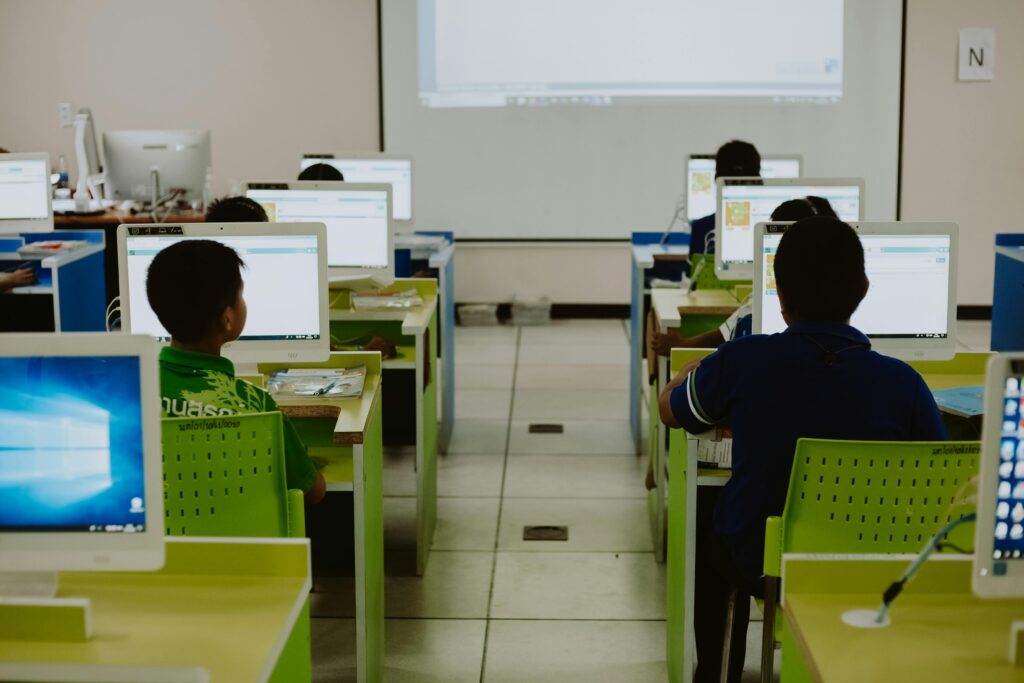Nowadays, digital technology plays a major role in education. We use e-textbooks, online platforms, and learning apps every day, often without thinking about the environmental impact. While digital learning might seem like a sustainable solution, it also brings hidden costs—high energy consumption, electronic waste, and a growing carbon footprint. So, how can we take advantage of technology in school while also protecting the planet?
Is Digital Always Greener?
Switching from paper to screens may feel like a step forward, but things are not that simple. Here are a few facts worth knowing:
Producing electronic devices requires rare materials like lithium and cobalt. Mining these resources can damage ecosystems and pollute the environment. Data centers and cloud storage need huge amounts of electricity to keep running. The more we use online platforms, the more energy we consume. Electronic waste (e-waste) is a serious issue. Many old phones, tablets, and laptops end up in landfills instead of being recycled.
Here are some simple and practical things you can do as a student to reduce your environmental impact:
1. Choose Refurbished Devices
If you need a new phone, tablet, or laptop, consider a refurbished one. These are just as reliable, cost less, and help reduce the demand for new raw materials.
2. Save Energy Every Day: Keep screen brightness at a reasonable level. Turn off your device when you’re not using it. Use battery-saving settings on your phone and computer.
3. Don’t Go Fully Digital: While digital textbooks are great, writing notes by hand (on recycled paper) can help you remember information better. Don’t print everything, but also don’t rely on digital tools when they’re not necessary.
4. Clean Up Your Cloud
Saving everything online sounds convenient, but cloud storage uses a lot of energy. Get into the habit of deleting old files and unused apps.
5. Recycle Electronics Properly
Don’t throw broken devices in the trash. Look for electronics recycling programs in your school or community, or donate working devices to someone who needs them.
Some schools have already started making changes to reduce their environmental footprint through technology:
Solar energy for school labs – Certain schools have installed solar panels to power their computer rooms and digital devices.
Limited internet use during class – To reduce unnecessary energy use, some schools limit Wi-Fi access to educational tools only.
Tech recycling programs – Schools encourage students and staff to return old devices for responsible recycling or reuse.
Can One Student Make a Difference?
Yes. Your daily choices matter. Using energy wisely, extending the life of your devices, and thinking twice before buying new tech can all make a difference. When many students make small changes, the combined impact is huge.
Challenge: For one week, try to follow at least three of the tips above. You might be surprised how easy it is to learn in a smarter, more sustainable way—without giving up the tech you love.







